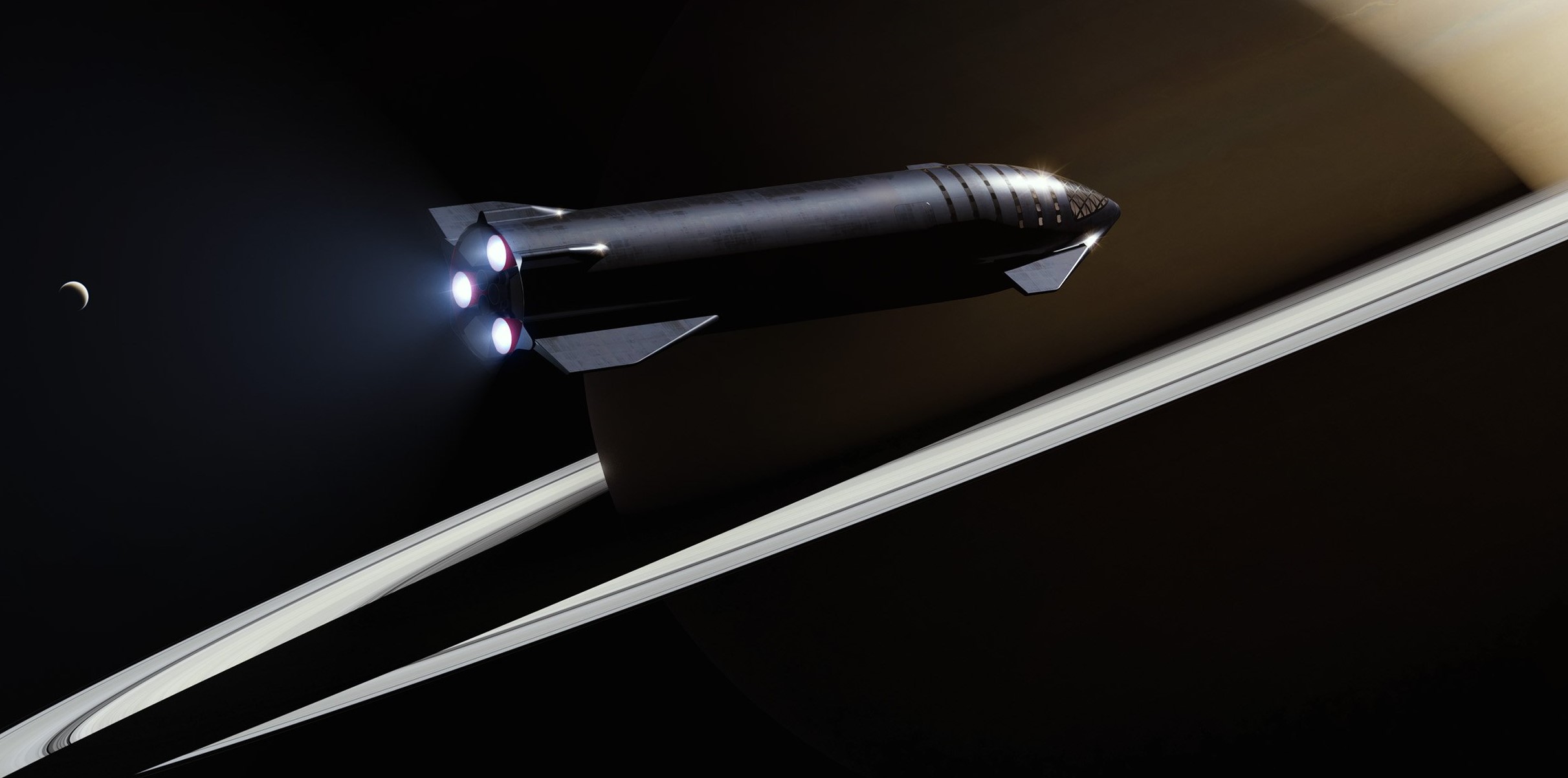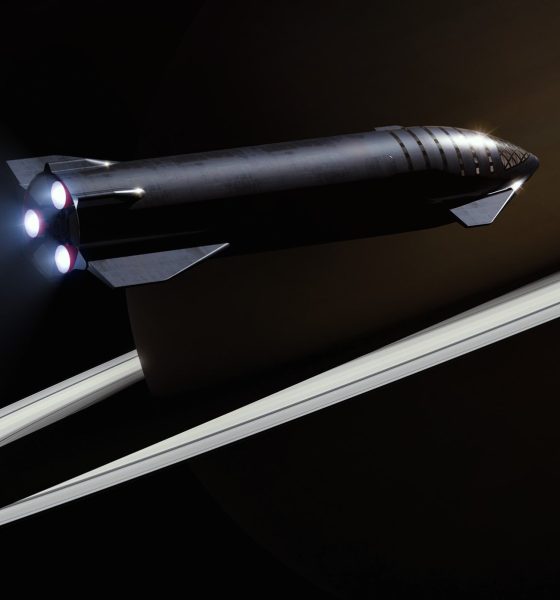

News
SpaceX CEO Elon Musk teases nine-engine Starship, Raptor upgrades
In his latest round of SpaceX-related tweets, CEO Elon Musk says that the company has plans to boost Raptor’s performance by at least 15% and the number of those engines installed on Starship by 50%.
Those updated goals came hand in hand with significant changes to the design and operation of both Starship and its Super Heavy booster, which at one point was expected to utilize a “Boost” variant of Raptor that would trade thrust vector control (TVC; i.e. gimballing) and a wide throttle range for far greater thrust. At least according to Musk’s latest account, that substantially different “Raptor Boost” variant is now no more.
On July 3rd, NASASpaceflight forum member and photographer BocaChicaGal captured photos of SpaceX delivering three new Raptor engines to its Boca Chica Starship factory. Two of those engines (RB3 and RB4) featured Raptor Boost labels and were likely the first engines of their kind to complete qualification testing in McGregor, Texas. As of their arrival in South Texas, it was assumed that Raptor Boost still represented a variant of the engine with almost 50% more thrust at the cost of gimbal and throttle authority.
However, Musk himself replied to some of the resulting tweets later that evening, revealing that Super Heavy’s outer ring of up to 20 “Raptor Boost” engines would indeed have no ability to gimbal but would still be able to throttle.
Later the same day, the SpaceX CEO clarified further, stating that the company now plans to upgrade Raptor’s existing design to boost engine thrust to ~230 tons (~510,000 lbf) while still maintaining a wide throttle range and optional thrust vector control. With such an engine, “all Raptors on [a Super Heavy] booster, whether fixed or gimbaling, would be the same.” The only unique aspect of “Raptor Boost,” then, would be their installation around the inner ‘ring’ of Super Heavy’s skirt and their resulting lack of gimbal authority.
It’s somewhat unclear, then, why two of the engines SpaceX delivered on July 3rd were labeled “RB#” and one explicitly outfitted with a name tag reading “Hello, my name is Boost.” Notably, a quick side-by-side comparison enabled by those photos strongly implies that Raptor Booster engine 3 (RB3) and Raptor 79 (R79) are virtually identical aside from RB3’s rerouted plumbing and unique mounting hardpoints. In other words, barring surprises, the “boost” nomenclature appears to be more vestigial than anything.
Ultimately, as Musk notes, if SpaceX manages to boost “Raptor 2” to 230 tons of thrust, a Super Heavy booster with 33 mostly identical engines would have a peak liftoff thrust around 7600 tons (~16.8 million lbf), translating to a thrust to weight ratio of more than 1.5. For a large rocket with liquid propulsion only, a TWR greater than 1.5 is very respectable and improves acceleration off the launch pad, reduces gravity losses in the first few minutes of ascent, and thus boosts overall efficiency.
Already, Musk’s implication that 33 engines could ultimately be installed on Super Heavy is a departure from comments the CEO made barely a month ago when he revealed a base increase from 28 to 29 engines with the possibility of expanding to 32 down the road. Also new is the implication that SpaceX is considering adding three more vacuum-optimized engines to Starship’s six planned Raptors, leaving ships with six Raptor Vacuum (RVac) engines and three sea level-optimized engines (the same variant on Super Heavy).
Musk says that SpaceX has yet to decide if Raptor Vacuum will be commonized with Raptor 2, boosting its thrust, or if greater efficiency will be pursued instead. Regardless, even with six 200-ton-thrust RVacs and three Raptor 2s, Starship would produce upwards of 2000 tons of thrust in vacuum, creating an upper stage with almost as much thrust as Falcon Heavy and a fully-fueled thrust to weight ratio of ~1.7 – even better than Super Heavy.

News
Tesla FSD fleet is nearing 7 billion total miles, including 2.5 billion city miles
As can be seen on Tesla’s official FSD webpage, vehicles equipped with the system have now navigated over 6.99 billion miles.

Tesla’s Full Self-Driving (Supervised) fleet is closing in on almost 7 billion total miles driven, as per data posted by the company on its official FSD webpage.
These figures hint at the massive scale of data fueling Tesla’s rapid FSD improvements, which have been quite notable as of late.
FSD mileage milestones
As can be seen on Tesla’s official FSD webpage, vehicles equipped with the system have now navigated over 6.99 billion miles. Tesla owner and avid FSD tester Whole Mars Catalog also shared a screenshot indicating that from the nearly 7 billion miles traveled by the FSD fleet, more than 2.5 billion miles were driven inside cities.
City miles are particularly valuable for complex urban scenarios like unprotected turns, pedestrian interactions, and traffic lights. This is also the difference-maker for FSD, as only complex solutions, such as Waymo’s self-driving taxis, operate similarly on inner-city streets. And even then, incidents such as the San Francisco blackouts have proven challenging for sensor-rich vehicles like Waymos.
Tesla’s data edge
Tesla has a number of advantages in the autonomous vehicle sector, one of which is the size of its fleet and the number of vehicles training FSD on real-world roads. Tesla’s nearly 7 billion FSD miles then allow the company to roll out updates that make its vehicles behave like they are being driven by experienced drivers, even if they are operating on their own.
So notable are Tesla’s improvements to FSD that NVIDIA Director of Robotics Jim Fan, after experiencing FSD v14, noted that the system is the first AI that passes what he described as a “Physical Turing Test.”
“Despite knowing exactly how robot learning works, I still find it magical watching the steering wheel turn by itself. First it feels surreal, next it becomes routine. Then, like the smartphone, taking it away actively hurts. This is how humanity gets rewired and glued to god-like technologies,” Fan wrote in a post on X.
News
Tesla starts showing how FSD will change lives in Europe
Local officials tested the system on narrow country roads and were impressed by FSD’s smooth, human-like driving, with some calling the service a game-changer for everyday life in areas that are far from urban centers.

Tesla has launched Europe’s first public shuttle service using Full Self-Driving (Supervised) in the rural Eifelkreis Bitburg-Prüm region of Germany, demonstrating how the technology can restore independence and mobility for people who struggle with limited transport options.
Local officials tested the system on narrow country roads and were impressed by FSD’s smooth, human-like driving, with some calling the service a game-changer for everyday life in areas that are far from urban centers.
Officials see real impact on rural residents
Arzfeld Mayor Johannes Kuhl and District Administrator Andreas Kruppert personally tested the Tesla shuttle service. This allowed them to see just how well FSD navigated winding lanes and rural roads confidently. Kruppert said, “Autonomous driving sounds like science fiction to many, but we simply see here that it works totally well in rural regions too.” Kuhl, for his part, also noted that FSD “feels like a very experienced driver.”
The pilot complements the area’s “Citizen Bus” program, which provides on-demand rides for elderly residents who can no longer drive themselves. Tesla Europe shared a video of a demonstration of the service, highlighting how FSD gives people their freedom back, even in places where public transport is not as prevalent.
What the Ministry for Economic Affairs and Transport says
Rhineland-Palatinate’s Minister Daniela Schmitt supported the project, praising the collaboration that made this “first of its kind in Europe” possible. As per the ministry, the rural rollout for the service shows FSD’s potential beyond major cities, and it delivers tangible benefits like grocery runs, doctor visits, and social connections for isolated residents.
“Reliable and flexible mobility is especially vital in rural areas. With the launch of a shuttle service using self-driving vehicles (FSD supervised) by Tesla in the Eifelkreis Bitburg-Prüm, an innovative pilot project is now getting underway that complements local community bus services. It is the first project of its kind in Europe.
“The result is a real gain for rural mobility: greater accessibility, more flexibility and tangible benefits for everyday life. A strong signal for innovation, cooperation and future-oriented mobility beyond urban centers,” the ministry wrote in a LinkedIn post.
News
Tesla China quietly posts Robotaxi-related job listing
Tesla China is currently seeking a Low Voltage Electrical Engineer to work on circuit board design for the company’s autonomous vehicles.

Tesla has posted a new job listing in Shanghai explicitly tied to its Robotaxi program, fueling speculation that the company is preparing to launch its dedicated autonomous ride-hailing service in China.
As noted in the listing, Tesla China is currently seeking a Low Voltage Electrical Engineer to work on circuit board design for the company’s autonomous vehicles.
Robotaxi-specific role
The listing, which was shared on social media platform X by industry watcher @tslaming, suggested that Tesla China is looking to fill the role urgently. The job listing itself specifically mentions that the person hired for the role will be working on the Low Voltage Hardware team, which would design the circuit boards that would serve as the nervous system of the Robotaxi.
Key tasks for the role, as indicated in the job listing, include collaboration with PCB layout, firmware, mechanical, program management, and validation teams, among other responsibilities. The role is based in Shanghai.
China Robotaxi launch
China represents a massive potential market for robotaxis, with its dense urban centers and supportive policies in select cities. Tesla has limited permission to roll out FSD in the country, though despite this, its vehicles have been hailed as among the best in the market when it comes to autonomous features. So far, at least, it appears that China supports Tesla’s FSD and Robotaxi rollout.
This was hinted at in November, when Tesla brought the Cybercab to the 8th China International Import Expo (CIIE) in Shanghai, marking the first time that the autonomous two-seater was brought to the Asia-Pacific region. The vehicle, despite not having a release date in China, received a significant amount of interest among the event’s attendees.








